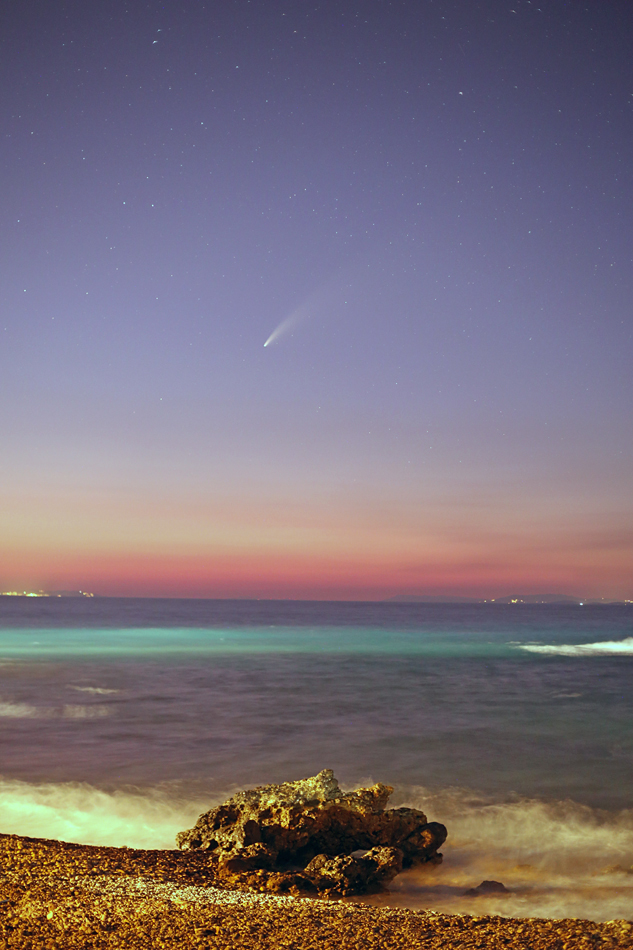
These travelling masses of ice and dust galloping throughout the universe are believed to have shaped the course of life
on this planet. As a result of comet-hunting, many deep-sky objects including nebulae and galaxies have been discovered
with perhaps the most obvious collection being the 109 (or 110) DSO's attributed to Charles Messier. With over 1000 comets
now having been catalogued and approximately 200 having been established as being periodic, historical records suggest
comets to have been observed and documented as far back as 240 BC (Comet Halley by the Chinese).
Comets are appealing to amateurs for a variety of reasons: they lead to incredible photographs thanks to their glowing and
colourful tails extending millions of kilometers as they approach the sun and the ice and various frozen gases in the nucleus
begin to vaporize; they are the precursors of meteor showers as remnants left behind on prior visits are encountered by our
planet while we orbit the sun; and they represent an active adventure and form the basis of a "culture" (comet hunters) based
on the discovery of new comets during the early dawn hours on the eastern horizon or just after sunset on the western horizon.
Note: Comet C/2020 F3 NEOWISE illustrated below while passing through the constellation of
Ursa Major and slightly to the southeast of é- and ê-UMa (mag 3.11 and 3.55, reespectively) was discovered on Mar 20, 2020 by members
of the WISE (Wide-field Infrared Survey Explorer) space telescope team when the comet was approximately magnitude 18.
Continuous monitoring revealed a steady brightening of the nucleus and which reached its peak around July 17th and after successfully
passing perihelion on July 3rd, 2020 (43 million km). It is readily visible under urban skies using direct vision in the northwestern
sky and at an altitude of only 15 degrees above the horizon. Having been classified as a long period comet, its reappearance back into the
Solar System is expected to be in a few thousand years.
For an ephemeris and orbital elements on this long period comet from NASA's Jet Propulsion Laboratory, click
here.
Note: Due to very heavy light pollution, the (blue) ion tail is not visible in the image below but only the
much larger white tail due to dust particle emission.
|
Comet: C/2020 F3 NEOWISE Discoverer: WISE Space Telescope, Mar 20, 2020 Type: Periodic Period: 4,400 - 6,700 yrs Constellation: Ursa Major RA / Dec: 08h 58m 35s / 48° 05' 19" Distance: 107.5 million km Magnitude: 9.6 |
 |
Date: Jul 16, 2020 21:55 UT+3 Location: Akrogiali Beach, Naxos Chora, Naxos, Greece Equipment: Canon EOS 6D Baader BCF2 Filter Canon EOS EF 50mm/f1.8 II USM @ f2.2 Exposures: 1 x 6 sec ISO 3200 JPG image format 5184x3456 Image Size Custom White Balance Manual Mode Continuous Servo Mode Software: Photoshop CS5 Processing: White Balance Correction Resampling JPG Compression |